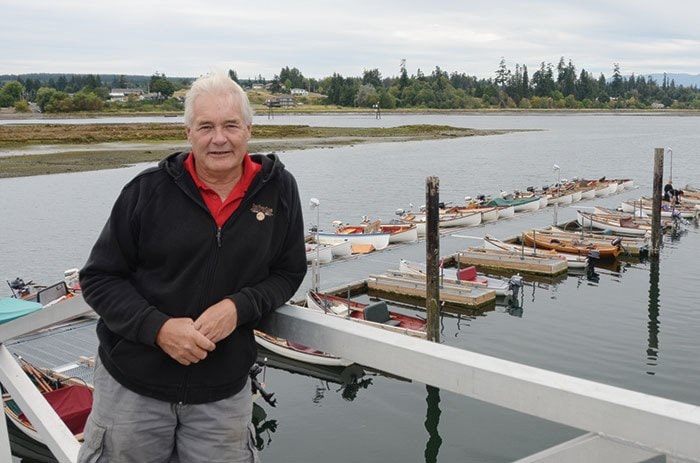Despite how it felt at the time, losing their docks a few years back may have been the best thing that could have happened to the Campbell River Tyee Club.
That’s because they now have a new wharf that is setting the standard for dock upgrades and environmental compliance.
With the new wharf facility completed, their membership numbers expanding (they have spots available for 50 boats and 70 people are on the wait list for one) and salmon spawning ground improvements on their way, the future looks brighter than ever for the club.
“Initially it was a five or six year plan to replace [the docks],” said Floyd Ross, vice president of the board of directors of the club, “and we were going to do bits and pieces as we could afford it.”
However, once the contractor on the operation got started on the first stage, “he just wanted to get it done, so he floated us financially in order to finish it,” Ross said, so the organization went to work on how to pay him back as soon as possible.
That led to the applications for various grants and fundraising efforts. One of those applications came back recently with funding for soon-to-be-implemented eelgrass transplantation to repair the riverbed that was damaged by the old dock.
That grant will complete the rebuild and hopefully ensure the viability of the organization for years to come, by promoting healthy salmon stocks into the future.
Eelgrass provides shelter for salmon fry, allowing them to hide from predators, as well as nourishes the ecosystem that provides the fish with food, so having to periodically untangle a propellor is an irritation worth suffering. Despite Tyee Club membership involving catch a 30-plus pound salmon in a rowboat, motors are used to get to and from the Tyee Pool
“It’s a really annoying weed, actually,” Ross said with a laugh. “It clogs up and bogs down our motors. But it’s really important for the fish, so we have to do what we can, because it’s the right thing to do. It’s not just about us, it’s about those who come after us, and doing what’s best for the place we live and want to continue enjoying.”
The eelgrass transplantation is the final stage in the estuary cleanup being done by the club.
Their old docks were wooden and didn’t allow light through to reach the riverbed.
Their opaque nature and the fact that they also came to rest on the riverbed during low tide was destructive to the plant life, which couldn’t recover naturally.
By selectively transplanting from other areas of the river to those depleted spots, they can initiate a process of natural recovery.
The eelgrass transplanting is scheduled to happen in November, when the operation will have minimal impact on salmon stocks and other environmental conditions.
The new wharf is constructed to allow light through and sits above the riverbed to avoid any future need for replanting.
